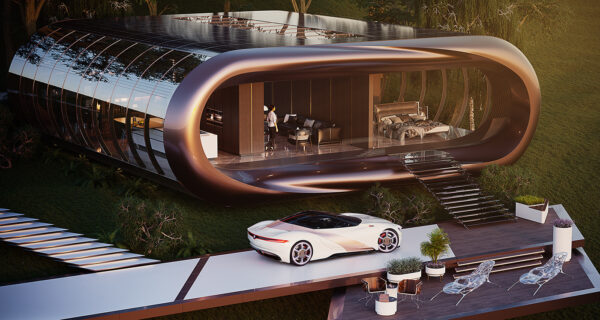A Glimpse Into Tomorrow’s Future Home
As we look towards the future, several exciting home trends are emerging that are poised to shape the way we live and experience our living spaces. Here are some key trends that are likely to influence future homes:
Sustainable Living
One of the most significant trends in future residential homes is a strong emphasis on sustainability. There is a shift toward eco-friendly construction materials, energy-efficient appliances, and renewable energy sources. Homes of the future will be designed to minimize their carbon footprint, incorporating features like solar roofs, energy-efficient insulation, and rainwater harvesting systems. Moreover, the use of recycled and locally sourced materials will become the norm, reducing waste and promoting a circular economy.
Smart Homes
The integration of smart technology into residential spaces is already well underway, and it’s only going to become more prevalent in the future. Smart homes are equipped with interconnected devices that allow homeowners to control everything from lighting and temperature to security and entertainment systems with a simple voice command or smartphone app. Artificial intelligence (AI) and machine learning will play a central role in optimizing energy usage, security, and convenience in these homes.
Modular and 3D-Printed Homes
The future of residential construction may see a shift toward modular and 3D-printed homes. These innovative approaches can significantly reduce construction costs and timelines while allowing for greater customization. Modular homes consist of pre-fabricated sections that are assembled on-site, while 3D-printed homes are created layer by layer using specialized machinery. These methods not only make homeownership more accessible but also offer the potential to address housing shortages in a more sustainable and efficient way.
Multigenerational Living
Changing demographics and cultural shifts are influencing the way we design and use our homes. Multigenerational living arrangements are becoming increasingly common, with multiple generations sharing the same space. Future residential homes will be designed to accommodate the needs of diverse family structures, providing separate living spaces or adaptable layouts to ensure privacy and harmony among family members.
Self Driving Cars
Self-driving cars are poised to revolutionize residential homes by reshaping how we use space, interact with transportation, and choose where to live. With the reduced need for on-site parking, homes can utilize that space for green areas, community facilities, or additional housing units, enhancing the overall appeal of neighborhoods. Garages may become obsolete, allowing for more flexible home designs and layouts. Commute times may become more productive or enjoyable, leading to shifts in housing preferences and urban planning. Homes may become more connected to self-driving cars, with integrated charging stations and smart home systems. Architectural designs may evolve to accommodate AVs, transforming the streetscape and the way we interact with our homes.
Conclusion
The future of residential homes promises to be both exciting and transformative. Sustainability, technology, and changing societal norms are driving innovation in the way we design, build, and live in our homes.
Published on 2023-09-15 12:14:49

